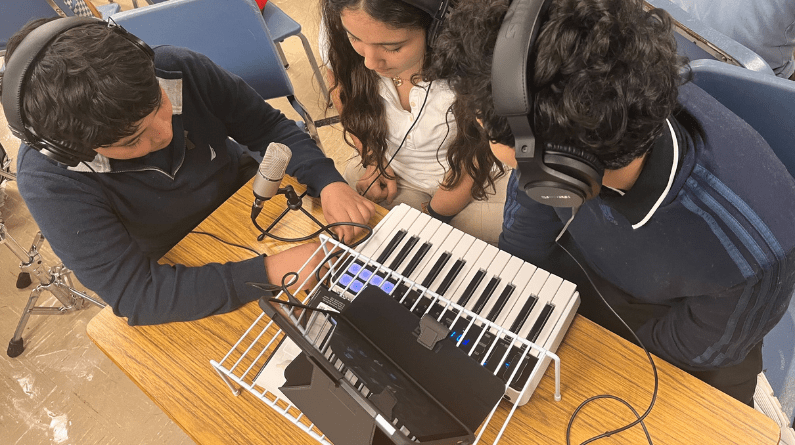Classroom Set-Ups

Your school may have a dedicated music classroom for audio production or share a music classroom with other content areas. You may have a permanent set-up or a mobile set-up. Your students may work one-to-one with their equipment or need to share in groups. Here are some things to consider for any situation.
⭕ Check it out! Music Classroom Set-Up Examples for different scenarios.
General Set-Up Tips:
- Power – Make sure you have enough power for each station. Ideally, each station or rig should have easy access to an outlet. For the teacher station and live performance and recording station, use power conditioners to protect your equipment and minimize electrical hums and noises when recording.
- Space – Plan out plenty of space between student production stations or rigs. Music gear and music classroom supplies can be bulky and require some elbow room to maneuver. You’ll also want to be mindful of creating room for walking and managing tripping hazards from various cords and cables (taping down cords is a good idea). Planning out your classroom around your power sources can help with this.
- Furniture – If you’re able to customize the furniture in your room, try to get large desks or tables for student stations with more room to set up.
- Storage – You will need ample amounts of storage space for either permanent or mobile setups. Music equipment can be very delicate and expensive, so you’ll want to lock away anything that isn’t in permanent use.
- Equipment Allocation – The photo above is from a middle school music tech classroom where students work in small groups. Consider the equipment or accessories you will need for students to share, including headphone splitters to listen to the same audio and desk organizers that prop up equipment for maximum table space.
Finally, check equipment packaging for additional licenses, warranties, and instruction manuals, that came with the gear. If you can, save the boxes for more expensive equipment. They can be useful if you ever need to transport or move equipment and increase value if you ever need to resell or replace an item.
Permanent Set-Ups
Permanent set-ups allow you to make the most of your space. Spend time mapping out how you want the classroom to flow, making note of where your power sources are and where you’ll need extension cords before you start setting up stations.
Shared Rooms and Temporary Set-Ups
Shared rooms and temporary set-ups will require you to have a well-organized storage system. Spend time creating an easy routine for setting up and tearing down rigs and stations with your students. Gig bags and charging carts can be great for storing individual rigs and devices. If you allow students to use equipment outside of the classroom, you might also want to have a checkout list and labeling system in place.
Adapting Computer Labs
Computer labs are a great place to store your music tech. They should already have built-in stations and access to power. The main thing you’ll need to adjust is spacing to make sure there’s enough room to incorporate midi keyboards, headphones, and interfaces. You’ll also need to be mindful of what DAWs are compatible with the computers.
Table of contents
